Claudia Goetzelmann: Integrated Media Photographer, Director of Photography
Claudia Goetzelmann is an integrated-media photographer and director of photography who has gained international recognition for her work in the realms of Fashion and Advertising. A native German, she has lived and travelled in many countries and continues to tell visual stories in locations as diverse as Brazil, Moscow and Singapore.
I discovered Claudia’s work in the pages of Luerzer’s Archive and struck up a conversation with her on Facebook one evening. Upon hearing that she was going to be in New York the following week, we arranged to have coffee and talk about her life and career.
Tell us a bit about your background and any early people or experiences that influenced you.
I got my first camera at the age of four. I always wanted to be a photographer, but that wasn’t what I did—I studied Social Law…only to find out that I didn’t really like it. I also always loved traveling. So after school I combined the two and moved to Africa, and that’s how it really started.
What was the impetus for you moving to Africa?
My boyfriend at the time got this job with Siemens and so we decided that we would leave Germany together and live abroad. That became the starting point for me to begin journalistic work. I photographed a lot of people—indigenous tribes, people I’d just met. I love people! I was living in Nigeria at that time. I had an exhibit at the Munich Stock Exchange and the Nigerian ambassador came to the opening.
I personally feel that you can only learn so much from school anyway. It’s passion and real-life experience that bring you success.
Up until that point had you had any training or education in taking photos?
I had it as a minor, but I never studied Photography full-on.
Ok so you majored in Social Law and then you had a Photography minor…
Yes…I always loved photography and I personally feel that you can only learn so much from school anyway. It’s passion and real-life experience that bring you success; you really, really need to love what you do, regardless if it’s photography or anything else. When you put all of your love and energy and passion into it, I think it will reflect and people will recognize it.
How long were you in Africa?
I lived in Africa for 2 ½ years and I traveled around a lot, taking photos.
How were you making a living?
It was not that easy—I took pictures and then I sold them to magazines. I also started teaching German…but that’s a whole other side story! (laughs) Because of that I met a lot of other cool people.
So you were teaching German and taking photos.
Yep. And then I moved to Indonesia and did the same thing.
What made you go to Indonesia?
Same as before—my boyfriend got a new job there and we decided that we’d move together to Asia. Asia was way easier, because they have a bigger infrastructure and it’s more open to photojournalism. I shot for Cambodia Airlines, went around Cambodia to take pictures…I took pictures of flight attendants in Angkor Watt and other remote places.
Then I moved to Singapore and did annual reports and advertising. I thought I would never do fashion work but then somehow things evolved.
Photography is actually such a small part of the day-to-day of what I do . . . I didn’t realize that I would be signing up to become a marketing expert!
At what point did you go from taking photos as something you just loved to do, to getting recognition and having it be your main gig?
In Singapore. You have to survive….photography is very, very competitive, and travel journalistic work doesn’t really pay that much. If you live in a third-world country you can live somewhat cheaply but if you move to a city like Singapore the cost of living is very high. So in the beginning I was teaching German, but slowly-but-surely that fizzled out and it all became photography.
Some say that there’s a fundamental step missing in most educational institutions as well as mentoring and assistant relationships in terms of how to make the leap from amateur photographer to paid professional photographer.
How did you get your first big paying client and was it more from your work or from your connections?
It’s the work. Connections help—I think maybe you can get a one-time chance if you know somebody—but if you screw up… Your work has to speak for itself.
In regards to schools, I agree that they teach you a lot of technical stuff but they don’t really teach you to go out and turn this into a business. They never teach you about all of the business aspects such as how to sell, how to talk to clients, how to maintain clients.
Photography is actually such a small part of the day-to-day of what I do. It’s crazy, it’s actually quite sad. Sometimes I wonder, had I known that photography was such a small part, would I have gone into it…I didn’t realize that I would be signing up to become a marketing expert (laughs)! It’s amazing, it’s overwhelming and sometimes really frustrating because it’s not really what I want to do, but I have to do it.
 What are some of those other aspects that you have to deal with, that you didn’t anticipate?
What are some of those other aspects that you have to deal with, that you didn’t anticipate?
Well…I’m here in New York for four days and I have a lot of meetings scheduled. Today I had six meetings and tomorrow I have more, there are all these people I want to meet, but in order to get these meetings I had to call them and send emails and follow up….there was so much energy put into getting these people on the phone, getting them to look at my work and agree to meet with me. It takes a lot of organizational skills…I have Excel spreadsheets, I never thought I would become an Excel spreadsheets expert (laughs)!
So I feel that schools should emphasize that more, have a business semester. It would be really good. They should teach you how to value yourself, how to estimate, how not to undersell, all of those things.
When it comes to photographers looking to make a go of it professionally, you have to have a vision, you have to have a style. Because clients need to know what they get when they hire you.
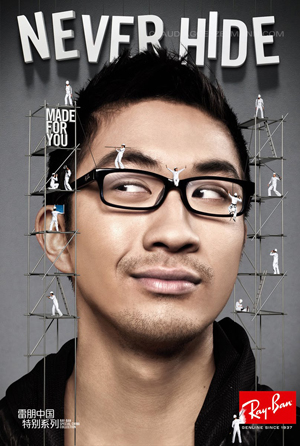 You started out with your travel journalism and then went more into advertising, right? How did you then get into Fashion?
You started out with your travel journalism and then went more into advertising, right? How did you then get into Fashion?
I shoot advertising campaigns and I also work with Fashion clients. I am happy living in both worlds.
I don’t know how it happened, I think because it’s an art form and it evolves as I evolve. My work evolved and my influences changed.
Fashion can be very free and creative, and I think it became an outlet for my creative juices. Fashion is very un-thankful and very cut-throat, but because it’s free it’s a playground where I can push my own boundaries.
Having a creative outlet is very important to me as it balances me…and I can bring fresh ideas into my more commercial and advertising-based work.
One thing about your work that resonates with me is that it’s very impactful but also has a somewhat playful vibe to it…not in a silly way, but it feels fun and dynamic.
That’s what a lot of people say. I think that’s because that’s who I am. I think I don’t take myself too seriously, and my photos reflect that.
All the places I’ve lived are also reflected. I’m German, so it’s very graphic (laughs), and then Asia, it’s kind of calm and zen…California is colorful. So I feel like it’s all that, and maybe it’s a little bit whimsical, a little bit understated.
You’ve traveled extensively. I remember reading recently that you’ve been going back and forth between New York & San Francisco a lot, is that still the case?
 Yes. San Francisco is currently my home base, but I also have the travel bug, so I can’t sit still, I always have to go somewhere (laughs).
Yes. San Francisco is currently my home base, but I also have the travel bug, so I can’t sit still, I always have to go somewhere (laughs).
Do you have a certain place that’s your favorite?
Hmm, that changes. I think my favorite place to travel to right now is Brazil….and then I love Berlin. If I could I think I would probably spend 6 months of the year in Berlin and 6 months in America.
As far as your visual style, is there a certain way that you would you describe it?
Kind of what we said earlier…graphic, colorful, a little bit whimsical, a little playful, with influence from all the different places I’ve lived. I’m very aware of that and I think that when it comes to photographers looking to make a go of it professionally, you have to have a vision, you have to have a style. Because clients need to know what they get when they hire you.
Do you find that you have clients that want you to keep doing the same thing, i.e. box you into the same style, or do you have enough room to experiment?
It depends on the client, advertising clients you definitely need to deliver to them what they ask for, but then if you do editorial then there can be more freedom. I think that the reason I ended up in Fashion is because it’s more free, you can be a little bit more playful.
Do you feel when you look back at your past work, that there’s a sort of evolution?
Yes definitely. When I get stuck I feel that too, I feel like I need to go and do something adventurous just to get inspired.
What do you do when you feel stuck?
I travel. I think traveling makes me a better person. I really like to meet people and interact with different cultures and I always feel very inspired. We can learn so much from different cultures and societies and different places, I find it very fascinating.
Is it difficult to maintain a healthy dose of human companionship when you’re traveling so much?
 That’s an interesting question. I guess I’ve traveled so much for so long that I feel like the more I travel the more I meet more like-minded people. I moved to San Francisco ten years ago…and then I had to leave in order to have a fresh look for the city and the vibe again.
That’s an interesting question. I guess I’ve traveled so much for so long that I feel like the more I travel the more I meet more like-minded people. I moved to San Francisco ten years ago…and then I had to leave in order to have a fresh look for the city and the vibe again.
Sometimes you meet people and they don’t know that you travel and they feel very intimidated when you leave, because they think that you’ll leave and won’t come back. When I left a year and a half ago, a lot of my friends were really in shock, “She’s gone, maybe we don’t have to invest that much in the friendship anymore,” until they realized that I will always be back and forth and they have to understand that. It was never a question with people who travel often, but for people who don’t it can be intimidating…which was definitely a learning experience for me.
As for a partner, you just have to find the right partner, right?
How did you transition into film/motion?
It was kind of a natural transition because I always thought of myself as a storyteller, shooting all of these stories and editorials, it just felt like suddenly, “Ok, now they’re moving.”
Even so it’s very different to shoot stills and motion…but I really like it. I enjoy it but there was definitely a learning curve.Last year I did a class in Final Cut Pro. Even though I know I’ll never be an editor, I need to know what’s possible when I’m shooting motion. It’s very fascinating, it’s the new media, everybody has to do it.
If you’re thinking of getting into photography, you have to do motion, there’s no way around it. At least in a commercial world. Maybe in fine art it’s different.
So how did you educate yourself on making films?
I don’t know, I just picked up the camera. My first film was the RED Jeans film.
That was your first film? Wow…
(laughs) I just thought I could do it, and when I did I really loved it. Now I have some other ones in the making. It’s all just a matter of time actually. Shooting the motion is one thing, but then you have to sit down for the editing.
How did that whole project even come together?
I wanted to do something which was “me,” which I could realistically execute without needing a huge crew or studio. I formulated the idea, pulled the crew together—producer, editor, etc.—and just did it.
Your work is very dynamic, you often involve stunt people and dancers…you have that one piece with the people doing Parkour.
Oh yeah, I love that—the people doing off-sports, stunts…dancers…I love capturing the high energy, it’s so cool. When you meet these people too, they make it seem so easy. It makes me feel like I want to jump.
 How does a project typically come to you?
How does a project typically come to you?
Wow, that is so unpredictable…people I’ve met, people who hear my name, people like you who see my photos in a magazine. It’s very random.
Sometimes I meet people and I think that they don’t have anything for me and I forget about it and then a year later they call me and say “I’ve really wanted to work with you for a long time and now we have a project!” It’s amazing. So I don’t really know how it all comes about. You don’t really get much feedback, you rarely have a chance to say “Hey, did you get my promo,,” so you rarely know who gets it, who knows it & takes note of it.
Calling people up and having them already be familiar with your work is the biggest compliment, because in general you never really know who is picking up on it.
What kind of preparation do you do in advance of a shoot?
A lot! I’m German, I’m very organized (laughs). I like to make sure I pick the right team for the job required—makeup, stylists, producer. I’m usually very involved in the choosing of the models, the location…it’s nice to be involved up-front so that I don’t have to second-guess this part on the day of the shoot.
So yes, the more I prepare, the better I feel on the day of the shoot, because there’s so much going on and I don’t want to worry about those things and let my attention be taken away from the essence of what we want to create.
 When you are working on a set, how do you balance technical considerations with the emotional & artistic ones?
When you are working on a set, how do you balance technical considerations with the emotional & artistic ones?
The technical aspects really have to be in the background and to that end I think about them in advance. I can’t wait until the day of the shoot to think about how I want the lighting to be, I have to have that worked out beforehand.
I also work with assistants and we usually know each other quite well. A good assistant is an unspoken extension of myself.
How do you go about hiring assistants? There seems to be an overabundance of photographers desperate to make some type of connection to further their career.
 I’m very picky about who I work with. I get a lot of emails from assistants who want to work with me. I usually have the rule that if I do a personal shoot, a new assistant has to come along to the shoot and donate at least half a day. I want to know who he/she is. If the person does that, I know that he/she really wants to work with me, which is really important because I need to know that he/she wants to be a part of my team.
I’m very picky about who I work with. I get a lot of emails from assistants who want to work with me. I usually have the rule that if I do a personal shoot, a new assistant has to come along to the shoot and donate at least half a day. I want to know who he/she is. If the person does that, I know that he/she really wants to work with me, which is really important because I need to know that he/she wants to be a part of my team.
He/she really needs to know what I think because on big shoots I don’t want to think about the technical aspects, I tend to totally rely on my assistant.
I have a pool of assistants in a lot of different places and I know that I can call them and rely on them. They’re cool, they’re courteous, they’re fun….my crew is very important! I don’t want to worry about my crew, I want to focus on the creative process of creating images. Plus interacting with the creative team, client, etc…
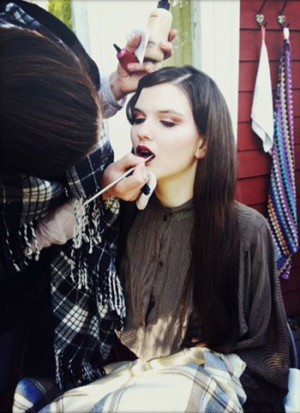 Have you ever hired an assistant based on them just randomly emailing you, or is it more word-of-mouth?
Have you ever hired an assistant based on them just randomly emailing you, or is it more word-of-mouth?
Sometimes people come highly recommended and that carries a lot. If people email me I try to meet them at least for coffee to see who they are. I feel that it’s really important, because I want to build relationships; I want to work with people more than once, I want to call them and say, “I’m in town, would you like to work with me on this shoot.” I don’t want to think every time I come to town, “Oh, who can I work with now.” I want to have a few people, a pool…it’s the same thing with hair & makeup, stylists, producers, whoever else…
Is there anything you wish to say about the collaborative process?
I’m a very big collaborator. It’s like we give birth to an image together. The art director, the stylist, makeup…everybody brings their expertise and you put them together, and spend the day or multiple days together to create these images.
In situations where you’re working as a Director of Photography but then there’s also the Director, how does that dynamic work?
It’s interesting, because you have to find a balance and define the roles in advance. It’s a new medium…as a photographer, I’m usually in charge, so then if I work with a director they think they’re in charge, so you have two strong-minded people and you have to step back and say, “Ok, what are we doing here?” You have to define the roles.So do you normally just sit and talk in advance?
Yes, yes, it’s all about communication. So in an ideal situation most definitely. It helps when the roles and boundaries are laid out clearly. It invites fun and ease into our actual shoot days!
In terms of your career, were there any challenges or frustrations that you had to overcome in order to get where you are today?
Oh, so many (laughs)! Photography is so competitive, I’m always amazed that people still want to do it. It’s very cut-throat, especially now with cameras getting cheaper.
Moving to America was very challenging, because in America people like to define you and put you in drawers. They see you shoot portraits, so they put you in the “portrait” drawer. You shoot table tops, they put you in the “table top” drawer. It was interesting and frustrating to learn that, but it’s part of the learning curve . . .
Other challenges…even though I’ve lived in San Francisco so long, I’m still German and therefore more direct. People will often not be direct back, because in California that’s not what people normally do…sometimes you go around and around, and they never tell you flat out if they like something or if they they don’t. It’s very interesting…
Are there any projects you’ve worked on that stick out in your mind, ones that really forced you to step outside your comfort zone?
Well, I’ve done a bunch of things when I really think about it. I guess sometimes you do things just because you do them, and then you look back and think “Oh my.”
You really, really, really have to love it. You have to dream, eat, poop photography…
Once there was this job in Vietnam and Cambodia, a company was doing a land survey and they needed someone to come along and photograph the landscapes…which was me! So we walked along the Cambodian & Vietnamese border and we climbed along these mountain ranges and tops which were really remote, where no one had been around since the Vietnam War. We had these Vietnamese guides with us, and once in a while they would have us stop because there were all these mines still in the ground.
Another job I had was in Singapore, it was to capture a large fountain situated in the center of four high-rise office buildings. The only way to get the shot I needed was to be on the rooftop of one of the buildings, 30 floors up, leaning way out over the ledge in order to shoot straight down.
I had a big heavy camera which was strapped to me and I was strapped into a set of harnesses, one secured into the wall and the others held by security guards. It was an exciting project and the photos turned out well, but I definitely had nightmares about it afterwards!
I did all these things where it was dangerous, but in the moment you think, “Oh, anything for the camera, for the shot.”
Are there any projects you’ve done that you’re especially fond of?
Usually my favorite project is the latest one. I’ll be really into one until the next one comes along…I get really into it, it becomes my focus, and then once I’m done, I’m done.
Certain advances in technology—smartphones, social media—have empowered more people than ever to document the world around them and to promote their creative endeavors.
Some people are excited by this, while others lament that truly talented artists are getting lost in a market that is saturated with amateur talent, or being forced to resort to gimmicks in order to get attention.
What are your thoughts on this?
 I think that because of these advances a lot of really talented people have found a platform with which they can share their work with a wider audience and get recognition.
I think that because of these advances a lot of really talented people have found a platform with which they can share their work with a wider audience and get recognition.
If you’re really serious about being a photographer in a commercial world, then you still need to cultivate certain skills, have your style, know your business aspects and be good. If you’re a hobby photographer and you just want to have your online gallery with an occasional sale, that’s also good. It all has its place.
It’s all the “Wild West” of digital right now…and it’s always changing. I think it’s very important to embrace these changes.
For example, I haven’t shot in film in forever, I’m all digital. Some people really miss shooting in film, but I don’t…it’s not my personality to look back and be sad about what used to be. I want to shoot with the latest camera, the latest video equipment. All of these things are just tools, and they change with time…my vision stays.
What advice would you give to individuals looking to follow a similar career path?
You really, really, really have to love it. You have to dream, eat, poop photography (laughs). It never stops, it’s not a 9-5 job, and you really have to put your heart into it and even more, and hopefully people will recognize you. Don’t give up, don’t take anything personally, just stay true to yourself, find your voice. Find your style. There are all these trends, but it doesn’t matter. Find your voice.
Are there any other skills or behavioral traits that you encourage people to cultivate?Be kind. Be nice, because who wants to spend a day or days with a grumpy person. Be fair, be giving . . .
You have to be very professional, you have to be very reliable. If you say you’ll do something, do it, and do it the best you can.
Whether I’m doing a personal shoot or a job that I’m getting paid for, I always try to give the best I can because I ask people to work and play with me and it’s equally their time…from models, to assistants, to whoever.
Keep up with Claudia at claudiagoetzelmann.com.
Nikolai would like to thank Michael Sullivan, Trevz Bayack and Layla Abramowitz for their input on this article.






















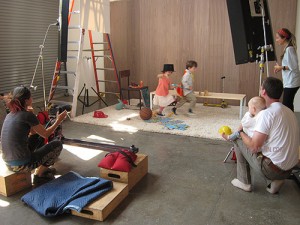

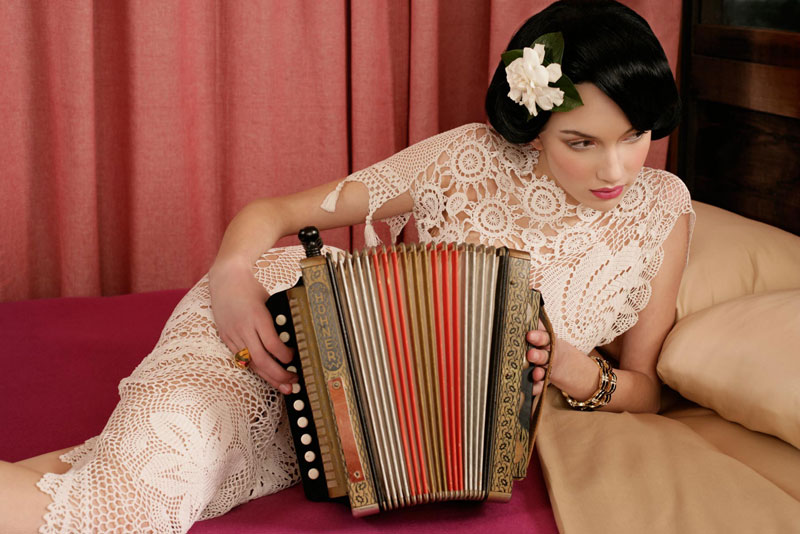

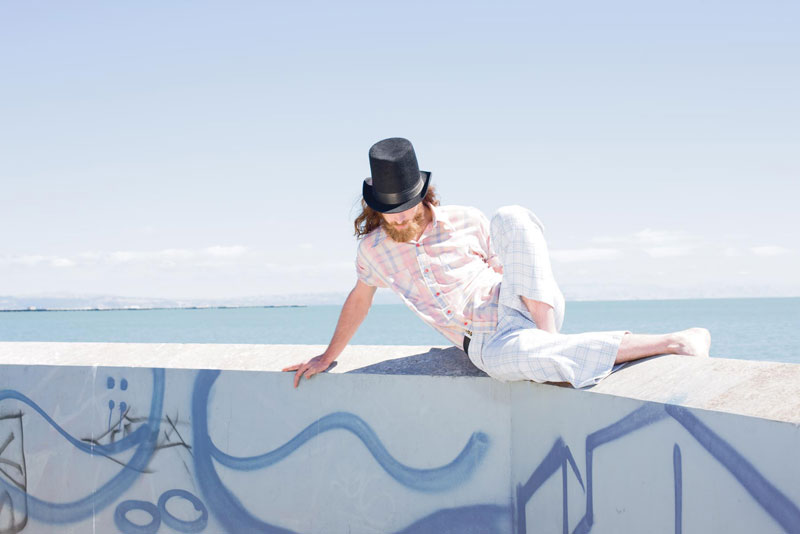









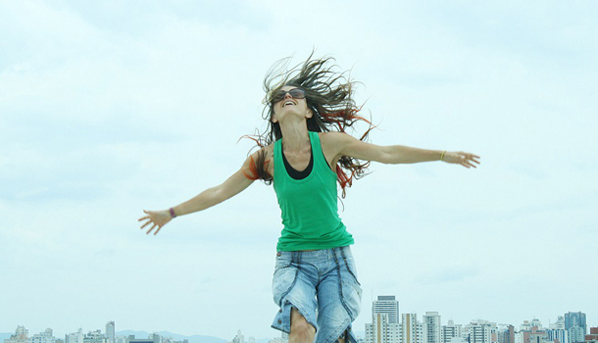

481 Comments
Great story! Claudia is an inspiring force of nature, and I’ve had the pleasure of working with her so know firsthand. Her work is so uniquely her own, and her energy and enthusiasm is contagious.
I loved reading this interview; Claudia seems a fascinating person, so open and present for every new adventure. Since I was born in Berlin, I particularly liked that she would want to live half a year there and half a year in the U.S. Berlin is “new and old”- dynamic- particularly since the wall came down. The U.S., particularly California,is the same and seems to inspire some of her art. Claudia catches movement, shape and color in her photographs pulling in the viewer and making me wish that my 70 year old body could leap in the air with colorful fabric swirling around me. In my dreams. Thank you, Nikolai for that wonderful and insightful interview.